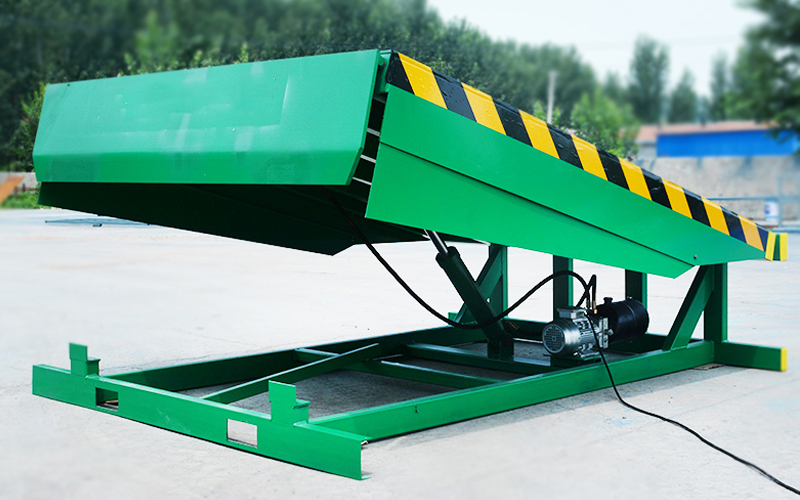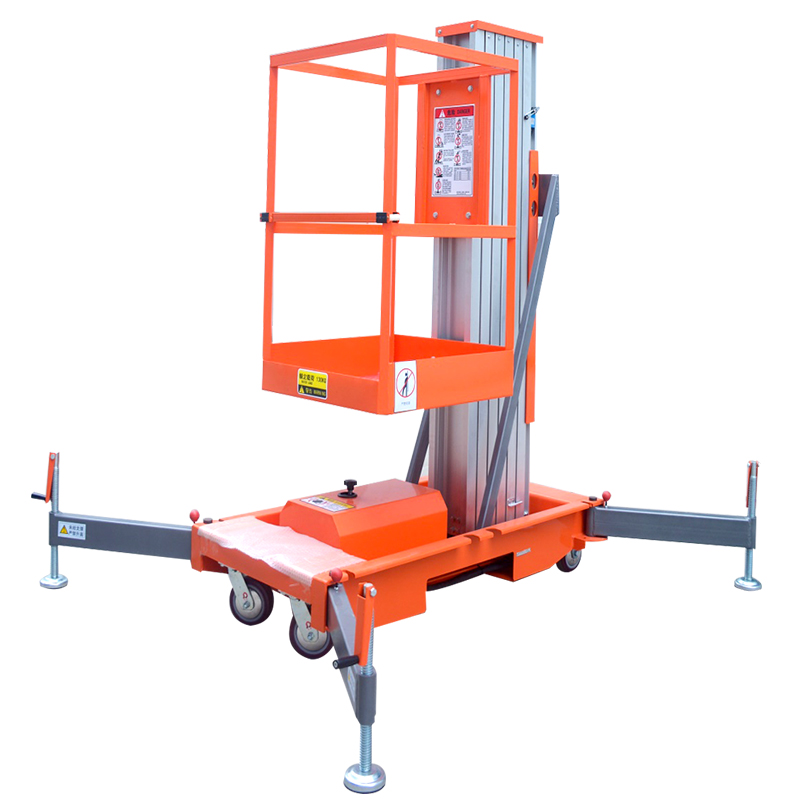A tracked scissor lift, also knows as crawler scissor lift, is a type of aerial work platform equipped with crawler tracks instead of traditional wheels, designed to operate on rough, uneven, or muddy terrain. Unlike standard wheeled scissor lifts, tracked models offer superior stability and mobility across challenging outdoor job sites, making them ideal for construction, maintenance, and installation tasks in off-road or undeveloped environments.
What sets tracked scissor lifts apart is their ability to maintain traction and balance on slopes, gravel, soft soil, or snow-covered ground. This added terrain capability significantly reduces the risk of tipping or becoming stuck, helping crews stay productive even under difficult conditions. Whether you’re working on a remote pipeline project, forested area, or an unfinished construction site, a tracked lift can provide reliable elevation without sacrificing safety or mobility.
Before buying a tracked scissor lift, it's essential to understand the technical specifications that determine whether the machine fits your operational needs. Factors like platform height, load capacity, ground clearance, and gradeability all impact the machine’s effectiveness and safety on the job. Overlooking these details could lead to costly downtime or operational limitations.
This guide will walk you through the key tracked scissor lift specifications you should evaluate before making a purchase. Whether you're a contractor, site manager, or equipment buyer, understanding these specs will help you make a smarter, safer investment.
Key Specifications to Consider
When choosing a tracked scissor lift, understanding the technical specifications is essential to ensure it matches your operational requirements. The following are the most critical factors to evaluate before buying:
1. Platform Height & Working Height
One of the most important specifications of a tracked scissor lift is its platform height, which refers to the maximum elevation the platform itself can reach. In contrast, working height typically includes the average operator’s reach and is usually about 6 feet (2 meters) higher than the platform height.
For example, a lift with a platform height of 10 meters offers a working height of roughly 12 meters. When assessing which model suits your needs, consider the height of the tasks being performed. Are you installing lighting fixtures on a warehouse ceiling? Painting a multi-story exterior wall? The working height should comfortably exceed your target reach to provide room for tools, safety equipment, and ergonomic maneuverability.
2. Load Capacity
Load capacity refers to how much weight the lift can safely raise, including personnel, tools, and materials. Tracked scissor lifts typically support anywhere from 230 kg (500 lbs) for compact models to over 680 kg (1500 lbs) for heavy-duty platforms.
Before purchasing, consider the type of work being done. A single technician with light tools may require minimal load capacity, but a crew handling bulky materials or equipment will need a lift rated for heavier weights. Exceeding the rated load capacity can compromise stability, trigger safety alarms, or shut down the lift altogether—making this a non-negotiable factor in safe and efficient operations.
3. Platform Size
The platform size determines how much space operators have to move and store equipment while elevated. Common platform dimensions range from 0.8 x 1.5 meters for narrow lifts to 2 x 4 meters for larger models with extendable decks.
A larger platform can improve productivity by allowing multiple workers to operate simultaneously or providing space for oversized tools and materials. However, it also impacts maneuverability in tight spaces and overall machine weight. Choose a size that matches your work environment: smaller for confined indoor or scaffold-like spaces, larger for open outdoor job sites.
4. Track Type and Terrain Capability
Tracked scissor lifts are designed to handle rough or uneven terrain, and the type of track system plays a critical role in this capability. The two most common types are:
Rubber tracks: These provide a good balance of traction and surface protection. They're ideal for soft ground, landscaping, and areas where asphalt or concrete might be damaged by steel tracks.
Steel tracks: These are more durable and provide superior grip on extremely rough or rocky terrain but may cause surface damage and are generally heavier.
Tracked lifts excel on muddy construction sites, sand, snow, gravel, and moderate inclines—terrain where wheeled lifts often fail. Consider your most frequent site conditions and match the track type accordingly.
5. Gradeability (Climbing Ability)
Gradeability refers to the maximum incline a lift can safely climb, usually expressed as a percentage (e.g., 30% = 17° slope). Tracked scissor lifts typically offer gradeability between 25% and 45%, depending on the model and engine power.
This spec is crucial for work on hilly terrain, ramps, or uneven construction zones. If your job site involves navigating slopes, make sure the gradeability is sufficient not just for climbing, but also for safe operation and maneuvering when loaded. Insufficient gradeability can lead to tipping risks or drivetrain strain.
6. Power Source
Tracked scissor lifts come with various power sources, each suited for different environments:
Electric or battery-powered: Best for indoor or semi-enclosed environments where zero emissions and low noise are required. Modern lithium-ion batteries offer long runtimes, but charging infrastructure is essential.
Diesel-powered: Offers more torque and is ideal for outdoor or remote locations without access to power. These lifts are generally louder and emit fumes, making them unsuitable for enclosed areas.
Some hybrid models combine both, offering flexibility. Consider not only the lift's runtime and torque but also local emission regulations, noise limits, and refueling or recharging logistics.
7. Dimensions and Weight
The overall dimensions of a tracked scissor lift—its length, width, and height—affect transportability, storage, and accessibility on-site. For example, if your job site has narrow gate entries or indoor corridors, you'll need a compact unit that can pass through tight spaces.
Weight is another important factor, especially when working on sensitive surfaces like flooring, basements, or bridges. Heavier lifts may require reinforced surfaces or risk damaging the ground. However, heavier models tend to offer better stability and load capacity.
Additionally, transportation is a consideration: can your trailer or truck legally and safely carry the lift to and from the site? Don’t overlook the logistics of moving the machine between locations.
When comparing tracked scissor lifts, it’s tempting to focus on just one or two standout specs. However, the real value lies in how these features work together to support your specific job requirements. For instance, a high platform height is only useful if the lift also has the gradeability and load capacity to perform safely in your environment.
Take time to evaluate each of these seven specifications—platform height, load capacity, platform size, track type, gradeability, power source, and overall dimensions—to make a smart, safe, and cost-effective decision.
Safety and Compliance Features
Safety is a top priority when operating any aerial work platform, and tracked scissor lifts are no exception. Built for use in challenging environments, these machines must be equipped with robust safety and compliance features to protect both operators and bystanders.
One critical feature is the automatic self-leveling system, which ensures the platform remains stable even when the lift is positioned on uneven or sloped ground. This feature not only improves operator comfort but also reduces the risk of tipping and mechanical strain during elevation. Some advanced models offer dynamic leveling, which adjusts in real time as the machine moves or raises.
Another essential safety component is the emergency lowering system. In the event of a power failure, hydraulic fault, or operator distress, this system allows the platform to be safely and quickly lowered to the ground, minimizing potential injury or equipment damage. It’s a crucial backup mechanism, especially on remote job sites where technical support may not be immediately available.
To ensure global safety compliance, reputable tracked scissor lifts are designed to meet or exceed international standards such as CE (Conformité Européenne) in Europe, ANSI (American National Standards Institute) in the United States, and ISO (International Organization for Standardization) globally. These certifications confirm that the machine adheres to rigorous safety, performance, and environmental benchmarks.
When selecting a tracked scissor lift, always confirm that the model includes these core safety features and certifications. Compliance isn’t just about regulations—it’s about protecting lives and ensuring peace of mind on every job site.
Bonus Features to Look For
While core specifications and safety features form the foundation of a good tracked scissor lift, modern models often come with bonus features that can significantly enhance productivity, convenience, and long-term operational value—especially in demanding or large-scale projects.
One highly valuable upgrade is the extendable platform. This allows operators to slide out a portion of the platform to access hard-to-reach areas without repositioning the entire machine. It increases working area and flexibility, making it easier to complete wide or complex tasks, such as façade work, signage, or large panel installation.
Another increasingly popular feature is remote control capability. With this function, operators can maneuver the lift from a safe distance using a handheld controller, improving visibility and safety—especially when working around obstacles or in confined areas. Remote functionality also speeds up positioning, reducing setup and downtime.
For fleet owners and rental companies, telemetry and remote diagnostics are game-changers. These systems allow real-time monitoring of equipment status, location, usage hours, and fault codes via GPS and cloud-based platforms. This not only streamlines maintenance scheduling and minimizes unexpected breakdowns, but also helps track unauthorized use or relocation of machines.
While not essential for every user, these bonus features can greatly improve the return on investment (ROI) by reducing labor, improving safety, and enabling smarter equipment management. If your budget allows, choosing a model with these enhancements is well worth considering.
Buying Tips and Brand Comparison
Purchasing a tracked scissor lift is a significant investment, whether for a construction company, maintenance firm, or rental fleet operator. Making the right buying decision involves more than just comparing prices — it requires understanding your long-term needs, evaluating machine condition, and choosing a reliable supplier. Below are essential tips to guide you through the buying process, along with a brief brand comparison to help you make an informed decision.
New vs. Used Tracked Scissor Lifts
One of the first decisions you'll face is whether to buy a new or used tracked scissor lift. Both options have their pros and cons:
New Lifts
Warranty Coverage: New units typically come with full manufacturer warranties, offering peace of mind and protection against defects.
Latest Technology: You'll benefit from the most up-to-date safety features, energy-efficient powertrains, and enhanced diagnostics.
Customization Options: Some manufacturers allow you to customize specifications such as platform size, track type, and color.
Used Lifts
Lower Upfront Cost: Buying second-hand can save a substantial amount, especially for small companies or short-term projects.
Faster Availability: Used lifts are usually ready for immediate delivery, with no manufacturing lead time.
Risk of Wear and Tear: Unless thoroughly inspected, a used lift may have hidden mechanical issues, reduced lifespan, or out-of-date safety standards.
Recommendation: For long-term use or frequent operations, a new lift is often the safer and more cost-effective choice over time. For short-term or low-frequency projects, a well-maintained used unit can be a smart option—provided it has a clear service history and passes a professional inspection.
Recommended Brand: TUHE Lift
One of the emerging leaders in the tracked scissor lift market is Tuhe Lift, a professional manufacturer based in Jiyang, famously known as “The Hometown of China's Lifting Platform Manufacturing.”
Founded in 2012 by six senior engineers, Tuhe Lift has grown rapidly to become one of the top lift manufacturers in China. With three modern production workshops, an exhibition hall, over 300 employees, and 20 domestic and international distributors, Tuhe offers both scale and expertise.
What Sets Tuhe Lift Apart:
Specialization in Tracked Lifts: Tuhe focuses on rugged, terrain-capable lifts that meet both domestic and global demand.
Strong Engineering Team: Founded by experienced engineers, the company prioritizes precision, safety, and technological innovation.
High Manufacturing Standards: Tuhe aims to reach world-class quality, ensuring that each machine meets international safety standards like CE and ISO.
Global Service Support: Their growing distributor network helps ensure after-sales support, parts availability, and technical guidance across different regions.
For companies looking for a balance of affordability, quality, and long-term reliability, Tuhe Lift is a trusted option that competes well with more expensive Western brands.
How to Choose a Reliable Supplier
Whether you're buying directly from a manufacturer like Tuhe or through a regional distributor, choosing a reputable supplier is just as important as selecting the right machine. Here's how to evaluate your options:
1. Check Certifications and Compliance
Ensure the lift meets regional safety and performance certifications such as CE, ANSI, or ISO. Reliable suppliers will be transparent about compliance documentation and offer product manuals, inspection records, and serial numbers.
2. Evaluate After-Sales Support
Good suppliers offer more than just machines. Look for:
Warranty terms (at least 1 year for major components)
Access to spare parts and consumables
Technical support and troubleshooting assistance
Training options for operators and maintenance staff
3. Request a Factory Visit or Virtual Tour
Reputable manufacturers often allow prospective buyers to tour their production facilities—either in person or via live video. This gives insight into their quality control, equipment, and operational professionalism.
4. Read Reviews and Case Studies
Search for customer reviews, testimonials, or case studies that show how their lifts perform in real-world conditions. Ask for references from existing customers in your industry or region.
5. Compare Lead Times and Logistics
Check how long it takes from order to delivery. For imported models, ask about shipping time, port handling, and customs support. A good supplier will help streamline the entire delivery process.
6. Assess Communication and Transparency
From the first inquiry to the final invoice, communication matters. Reliable suppliers are responsive, clear in their quotes, and upfront about any limitations or additional costs. If a supplier is slow to respond or vague about details, that may signal future service issues.
Final Advice
Choosing the right tracked scissor lift is not just about the specs—it’s about working with a brand and supplier you can trust. Whether you opt for a new unit from a well-known lift manufacturer like Tuhe Lift, or consider a second-hand model from a verified dealer, always perform your due diligence.
Taking the time to understand your operational needs, evaluate equipment quality, and choose a reliable partner will save you time, money, and frustration in the long run.
Conclusion
Choosing the right tracked scissor lift requires more than a glance at the price tag—it’s about understanding your job site needs, evaluating key specifications, and ensuring safety and reliability. From platform height and load capacity to track design and power source, each feature plays a vital role in real-world performance. Brands like Tuhe Lift offer a strong combination of quality, innovation, and service, making them a solid choice for professionals around the world. Whether you buy new or used, always partner with a trusted supplier who prioritizes compliance, support, and transparency. With the right lift, your team can work safer, smarter, and more efficiently—no matter how rough the terrain.
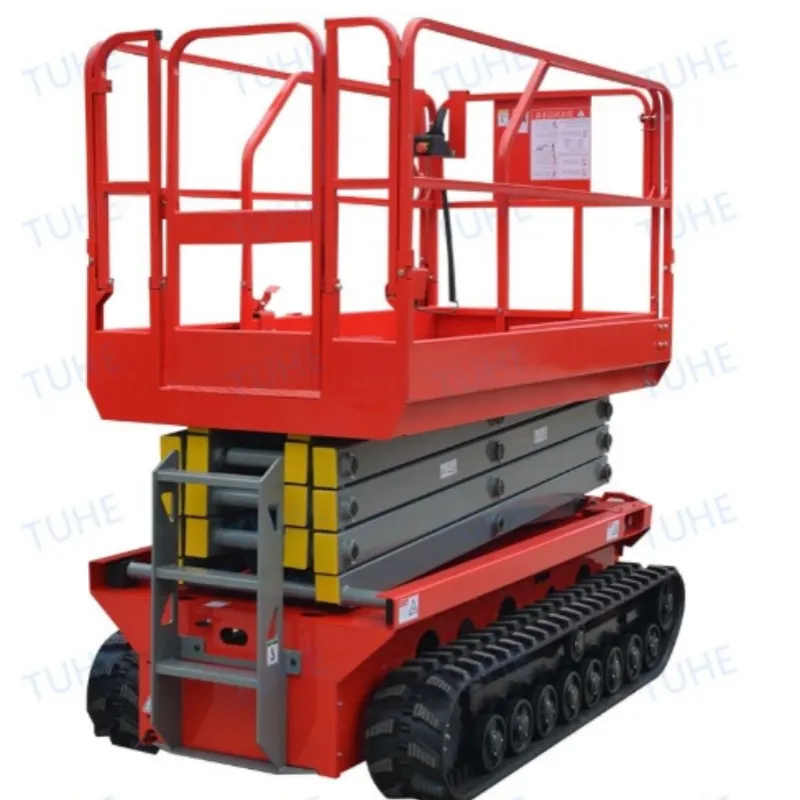
222.webp)
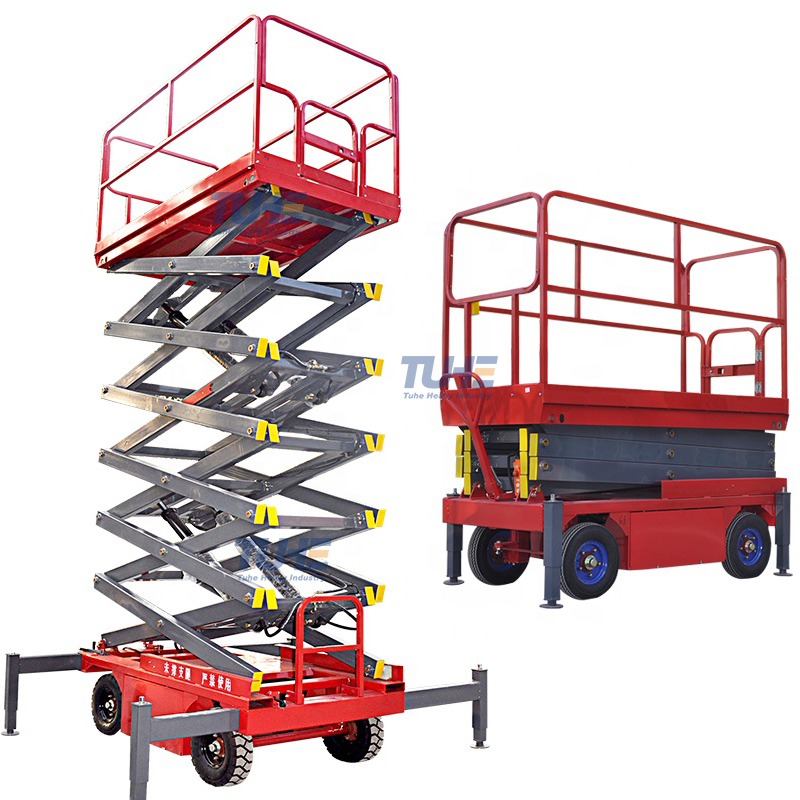
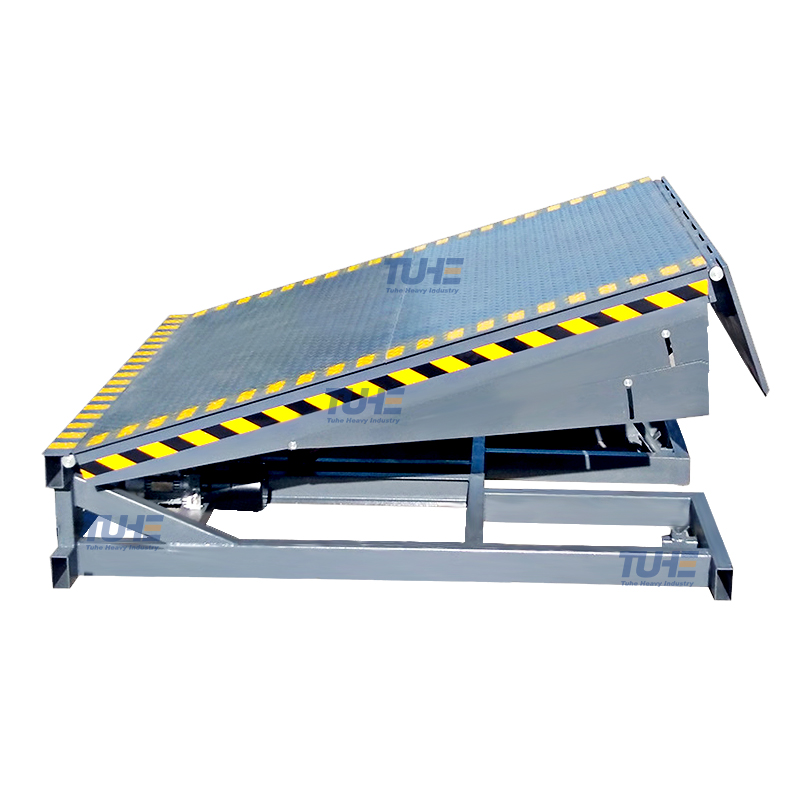
660.webp)
503.webp)
695.webp)
